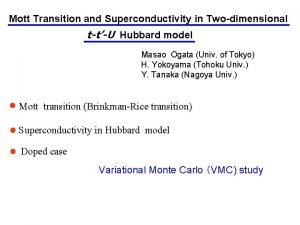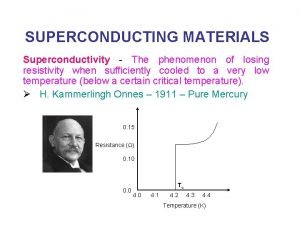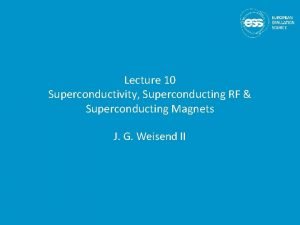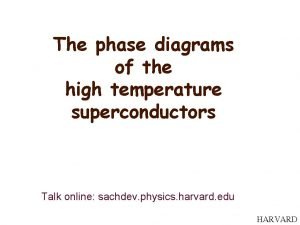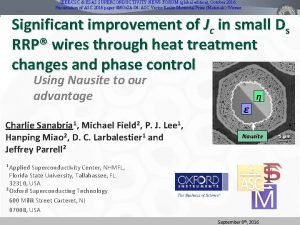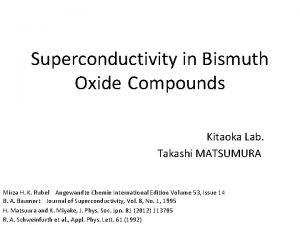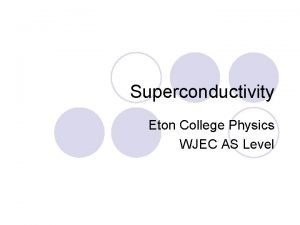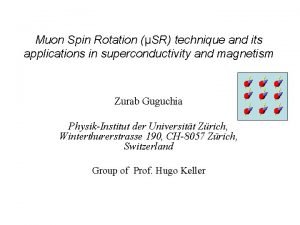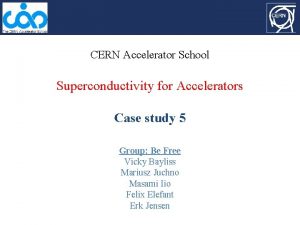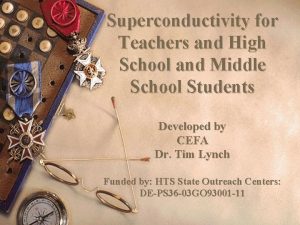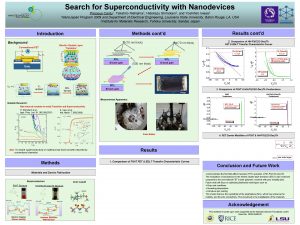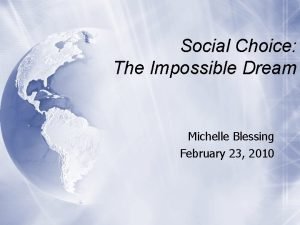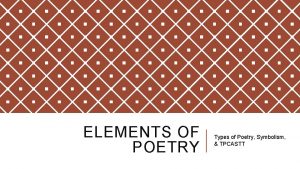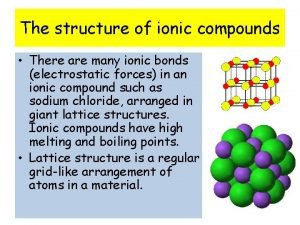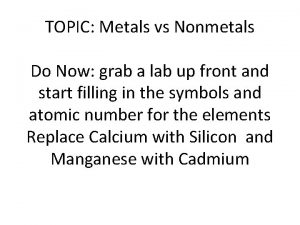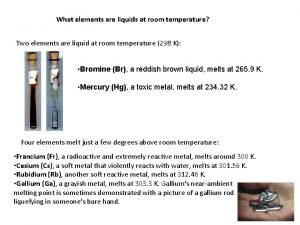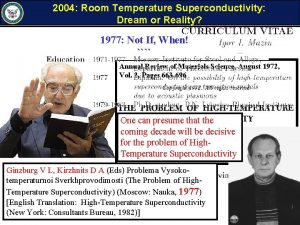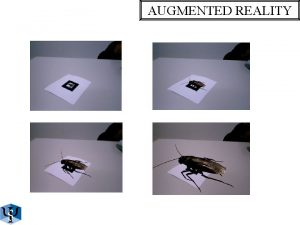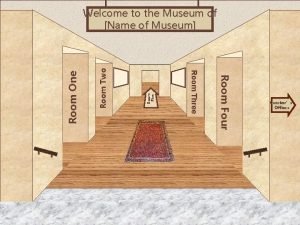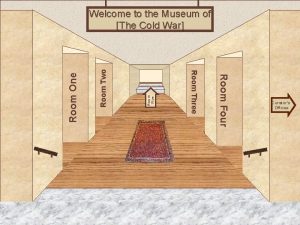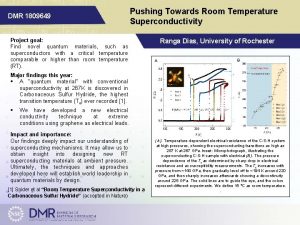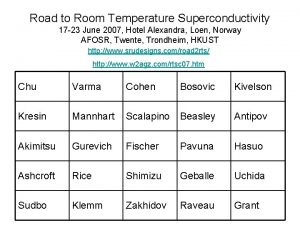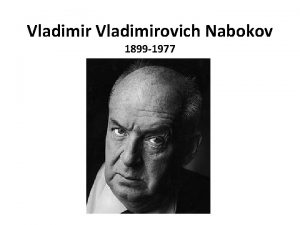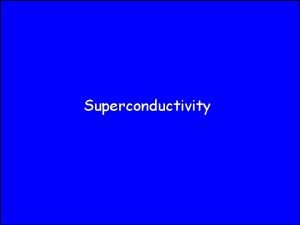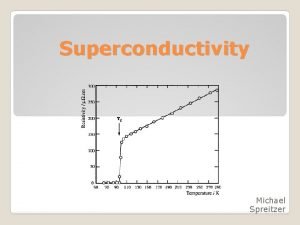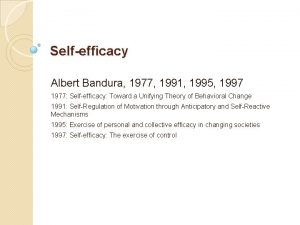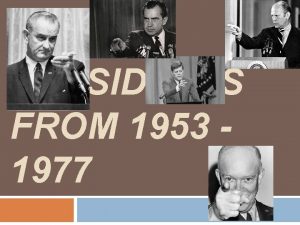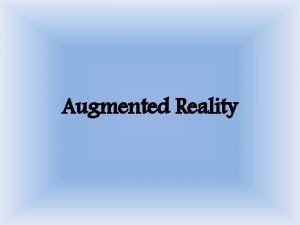2004 Room Temperature Superconductivity Dream or Reality 1977























- Slides: 23

2004: Room Temperature Superconductivity: Dream or Reality? 1977: Not If, When! 1972: High Temperature Superconductivity: ```` Dream or Reality? Annual Review of Materials Science, August 1972, Vol. 2, Pages 663 -696 One can presume that the coming decade will be decisive for the problem of High. Temperature Superconductivity Ginzburg V L, Kirzhnits D A (Eds) Problema Vysokotemperaturnoi Sverkhprovodimosti (The Problem of High. Temperature Superconductivity) (Moscow: Nauka, 1977) [English Translation: High-Temperature Superconductivity (New York: Consultants Bureau, 1982)]

Instant superconductor: Just Add Water! Electronic Structure, Magnetism and Superconductivity in Nax. Co. O 2 Igor Mazin, Michelle Johannes (Naval Research Laboratory) David Singh (ORNL) Acknowledgements: D. Agterberg (UWM) A. Liebsch (Juelich) M. J. Mehl (NRL) D. A. Papaconstantopoulos (NRL)

The Distorted Octahedral Environment of Co Ions Co. O 2 planes Co. O 2: Co 4+ (3 d 5) => Mott insulator? Na. Co. O 2: Co 3+ (3 d 6) => band insulator But Nax. Co. O 2 behaves almost oppositely…

0 M, µB 1 Na content phase diagram LDA typically finds smaller magnetic moments than experiment Exception: the vicinity of a quantum critical point EXPECTED • At x =0, system is a magnetic insulator • At x=1, system is a band insulator • For x < 0. 5, system is a magnetic metal • For x > 0. 5, system is a simple metal OBSERVED • For x < 0. 5, system is a simple metal • For x > 0. 5, system go through a sequence of magnetic metallic phases Consistent overestimation of magnetism suggests spin fluctuations

Multi-Orbital Nature of Fermi Surfaces Na 0. 7 Co. O 2 a 1 g= (xy) + (yz) + (zx) = 3 z 2 -r 2 eg’= (xy) + e 2 i/3(yz) + e 4 i/3(zx) Two distinct Fermi surface types are predicted by calculation. Small pockets carry 70% of the weight in hydrated compound (Note that FS is 2 D!)

Comparison with Experiment H. B. Yang et al M. Z. Hasan et al The large (a 1 g )Fermi Surface is clearly seen by ARPES The smaller (eg’) surfaces are absent WHY? • Correlations beyond LDA • Surface effects (relaxation, surface bands, Na content) • Matrix elements

How does correlation affect the electronic structure? Strongly correlated systems are characterized by large U/t What is U in Nax. Co. O 2? LMTO: 3. 7 e. V (for all 5 d-bands) Narrow t 2 g bands screened by Empty eg orbitals … U < 3. 7 e. V (A. Liebsch) LDA+U: Corrects on-site Coulomb repulsion Gets good FS match for U= 4 e. V (P. Zhang, PRL 93 236402) But U=4 e. V > UC = 3 e. V for unobserved charge disproportionation (K-W. Lee PRL 94 026403) For U<2. 5 e. V, small pockets remain Spin fluctuations: Renormalize bands, similarly to phonons Fermi surface is preserved, less weight

Optics: A Probe of Bulk Electronic Structure a g b There are three basic peaks: a, b, g. Peak shifts with changing Na content are reproduced. Peak heights and energy positions are exaggerated.

Optics: Effect of LDA+U How does electronic correlation manifest itself? Application of LDA+U worsens agreement with experiment. g b a Mott-Hubbard type correlation is not exhibited for any x!

Dynamical Correlation: DMFT Dynamical Mean Field Theory gives a very different picture of correlation effects: LDA+U Small eg’ holes grow A. Liebsch, ‘ 05 Some spectral weight shifts downward

Summary of Part I • Nax. Co. O 2 has an unusual magnetic phase diagram • The system does not behave as a Mott-Hubbard insulator, despite a rather narrow t 2 g bandwidth • The LDA+U method worsens agreement with optical measurements • Dynamical correlations show weight transfer from a 1 g eg i. e. holes grow! • Calculations, in conjunction with experiment, suggest the presence of spin fluctuations

Part II: Superconductivity What kind of superconductor is Na 0. 35 Co. O 2 y. H 2 O ? Pairing state: Singlet? Triplet? Order parameter: s, p, d, f …?

Experimental evidence for pairing state. . . singlet order parameter with s-wave symmetry is realized in Nax. Co. O 2. y. H 2 O - JPSJ 72, 2453 (2003). . . an unconventional superconducting symmetry with line nodes cond-mat/0410517 (2004) Unconventional superconductivity in Nax. Co. O 2 y. H 2 O - condmat/0408426 (2004) Possible unconventional superconductivity in Nax. Co. O 2. y. H(2)O Possible singlet to triplet probed by muon spin rotation and pairing transition in Nax. Co. O 2 relaxation - PR B 70, 13458 (2005) H 2 O - PR B 70, 144516 (2005) Evidence of nodal superconductivity in Na 0. 35 Co. O 2. 1. 3 H 2 O - PR B 71, 20504 (2005). . . magnetic fluctuations play an important role in the occurrence of superconductivity 74, 867 (2005) Our results make superconducting Nax. Co. O 2 a … superconducting- JPSJ electron pairs are in the singlet clear state candidate for magnetically mediated pairing cond-mat/0503010 (2005) - JPSJ 74 (2005)

What pairing states can we exclude? SR • No static magnetic moments After Sigrist and Ueda RMP 63 240 (1991) » No states with L 0 » No states with L≠ 0 » No non-unitary triplet states Two dimensionality • c/a ratio ~ 3. 5 9 representations 3 • / ~ 10 » 25 kz-dependent order ab c total states parameter » unphysical kz-dependent order parameter unrealistic DOS Probes • Non-exponential decay of C/T vs. T • No coherence peak in 1/T 1 » Non-exponential Superconducting stateofnot fully gapped decay relaxation time • » Superconducting state not fully gapped

How can pairing state be further resolved? All remaining states are triplet f f states Both f states are axial Knight Shift can distinguish: • Spin direction is to vector order parameter • KS constant across TC for planar spins (axial order parameter) • KS decreases across TC for axial spins (planar order parameter) Presently, results are contradictory

Evidence of Spin Fluctuations in Na 0. 35 Co. O 2 1. 4 H 2 O There is growing evidence that SF have a role in the superconductivity: • Curie-Weiss like behavior of 1/T 1 (above TC), with negative • Correlation of TC with magnetic fluctuations as measured by NQR • Direct neutron observation of spin fluctuations in related compounds • LDA calculations indicate proximity to quantum critical point Details of pairing/pair-breaking in a particular system depend on: i) Fermiology ii) spin fluctuation spectrum - Im (q, )

Is pairing interaction always attractive? Charge fluctuations are attractive regardless of parity (V>0) Spin fluctuations are repulsive (V<0) in a singlet channel (BCS, HTSC) Spin fluctuations are attractive (V<0) in a triplet channel (He 3, Sr 2 Ru. O 4? ) Consider BCS formula (in this notation, attractive V>0): If k and q are of the same sign, V must be positive. But if they are of the opposite sign, the corresponding V can be negative (repulsive) and still be pairing! 1

Spin fluctuations in Nax. Co. O 2 y. H 2 O 0(q, ) = 1 - I(q, ) 0(q, ) For a Mott-Hubbard system, I(q, ) is main factor For Nax. Co. O 2 y. H 2 O, we expect peaks to come from non-interacting part: 0(q, ) = f(ek+q) - f(ek) k (ek+q - ek - - id) AD=G/2 AC=AB=G/4 Im 0(q, )/ | 0 Re 0(q, 0)

Spin fluctuations: pairing and pair-breaking V<0 V>0 k = V>0 Vkq, q F( q , T) q Primary nesting SF’s are pair breaking for every state The secondary-nesting SF are either pair-breaking (s) or mutually canceling (d, p)

Odd gap superconductivity ( )= - (- ) Now spatial+spin Pauli principle for a pair is reversed: (Berezinskii, ‘ 74 … Balatsky et al, ‘ 92

What to expect from a triplet s-wave superconductor Severely reduced Hebel-Slichter peak - by at least (Tc/EF)2 Impurities should have small effect on Tc Finite DOS even at T=0 (gapless) - noexponential thermodynamics Vanishing of pair tunneling in even-odd Josephson junction

Summary of Part II • The current body of experimental evidence strongly suggests unconventional superconductivity • Both experiment and calculation point to the presence of spin fluctuations, possibly connected to the superconductivity • Calculated spin fluctuations are compatible only with odd gap, triplet superconductivity - this is consistent with experiment so far.

Superconductivity: symmetry (experiment) NQR, Fujimoto et al Knight, Higemoto et al C/T, Lorenz et al Absence of mag. fields, Higemoto et al SR, Kanigel et al, Hc 2, Maska et al
 Let's look at some examples
Let's look at some examples Hubbard
Hubbard Superconductivity
Superconductivity Superconductivity
Superconductivity Superconductivity
Superconductivity Superconductivity
Superconductivity Superconductivity
Superconductivity Superconductivity
Superconductivity Superconductivity a level physics
Superconductivity a level physics Superconductivity
Superconductivity Superconductivity
Superconductivity Superconductivity introduction
Superconductivity introduction Superconductivity
Superconductivity To dream the impossible dream poem
To dream the impossible dream poem Poem types
Poem types Dream room project
Dream room project Difference between antiferromagnetism and ferrimagnetism
Difference between antiferromagnetism and ferrimagnetism Difference between curie temperature and neel temperature
Difference between curie temperature and neel temperature Difference between curie temperature and neel temperature
Difference between curie temperature and neel temperature Ionic compounds are
Ionic compounds are Metals vs nonmetals
Metals vs nonmetals Aniline reacts with bromine water at room temperature
Aniline reacts with bromine water at room temperature Four types of organic molecules
Four types of organic molecules Two elements that are liquid at room temperature
Two elements that are liquid at room temperature

